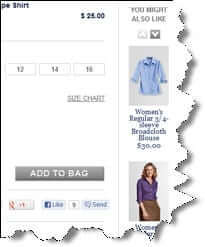They may appear on all of your social sites, but are your calls-to-action effective?
 So you’re a social media rock star. You’re active on the major social sites, helping customers solve problems and engaging them in conversations. You’re publishing blog posts and adding updates to Facebook and Twitter. You’ve polished your SEO skills, and your website’s a winner.
So you’re a social media rock star. You’re active on the major social sites, helping customers solve problems and engaging them in conversations. You’re publishing blog posts and adding updates to Facebook and Twitter. You’ve polished your SEO skills, and your website’s a winner.
Still, you’re not getting leads.
It’s good to take a subtle, gentle approach in much of your online sharing. But not in your call-to-action (CTA). It’s the one time when you should yell at your customers, telling them precisely what it is that you’d like them to do. Nicely.
Most websites don’t do this well.
Getting to the Sale
 Obviously, you want your visitors to buy something. But your calls-to-action can ease them into the endgame through smaller steps. Prospects on the fence may respond to an offer of something free, like more information (a brief white paper, webinar or reviews) or samples, trial versions and contest prizes.
Obviously, you want your visitors to buy something. But your calls-to-action can ease them into the endgame through smaller steps. Prospects on the fence may respond to an offer of something free, like more information (a brief white paper, webinar or reviews) or samples, trial versions and contest prizes.
But you must make these options impossible to miss. There are no hard-and-fast best practices here; about all that the experts agree on is that a CTA consists of text within a graphical shape. These general guidelines might help:
Positioning is critical. Your CTA should appear where the reader will notice it quickly – without scrolling. Make it pop by leaving space around it, but don’t isolate it so much that it feels disconnected. Drop it near any text that relates to it.
Size and shape make your CTA more eye-catching. This is a matter of balance, of proportion. Make it stand out, which you might accomplish by making it larger than any other graphic. But don’t let it overwhelm the screen. Use an unusual shape.
 Colors and fonts can help, too. Choose colors that don’t clash with the other content on the page, but that provide some contrast. You will probably use a different font, too, one that’s bold and striking, but make sure that the effect isn’t unpleasant.
Colors and fonts can help, too. Choose colors that don’t clash with the other content on the page, but that provide some contrast. You will probably use a different font, too, one that’s bold and striking, but make sure that the effect isn’t unpleasant.
Create text that:
Cuts to the chase. People tend to focus first on words, even though the picture may have drawn them there. Be succinct. Be clear. Don’t use jargon.
Is strong and decisive. Don’t use the same tired verbs that everyone uses in their CTAs. Go to a thesaurus if you have to. Use humor if it works.
 Clearly asks the audience to DO something. Be polite, but not overly so.
Clearly asks the audience to DO something. Be polite, but not overly so.
Implies urgency, where appropriate. Do you have a limited number of free samples? Say so.
Suggest other actions that might interest your audience but are secondary to your main CTA. Lands End does this well by displaying items similar to the one you’re buying. And Amazon’s Customers Who Bought This Item Also Bought likely snags a lot of impulse sales.
The design and position of your CTAs don’t have to be carved in stone. In fact, it’s a good idea to change them up and track which are the most effective. You’ll know when yours are working.
